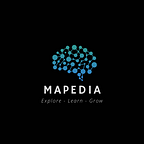How to Fix Online Learning
Learning has become overly accessible. Given the vast amount of educational resources available at the click of a button, starting the learning process can often be even more challenging than absorbing the material itself. On top of that, individuals with the desire to learn new topics often have to go through the trial and error process of finding materials that fit their own individual needs. What we end up with is wasted time, motivation, and in some cases, money, before a learner is able to even begin digesting new resources.
Here are the most prominent solutions we identified to improve the current state of online learning.
Centralisation of content
Put it all in one place! Rather than making users bounce around from course to blog to youtube playlist to forum, create a centralised location to host all of these different resources. On top of that, adding tags and filterable logic will allow users to sift through the vast amount of options they have to pick the best materials for their personal learning needs and desires.
Democratization
Bring power to the best content by removing the capitalistic aspects of the space. Currently, all resources you see first when searching on any given search engine are those that belong to the individuals who pay or play the most to get users attention. BUT — just because they’re on the top, does not mean they have the “best” resources, and most definitely does not mean their content is the best fit for each individual learner.
So — take the power of recommendation away from the monetary space, and give the power to the people! The resources you see first should be those that have helped the most people, or those that have been deemed the most insightful or impactful to one’s learning pursuit. And to take it one step further — tailor this power based on each individual with proper, data-driven guidance.
Data and community driven guidance
Through democratisation and the removal of money driven recommendations, a well-oiled system should be able to tailor the guidance for each unique learner. Through the collection of data and the power of a large community, each user should be showcased the best starting point and most effective pathway to their desired end-point in order to accomplish their learning goals.
Imagine you decide to take the next step in learning a specific topic. Through the analysis of your learning preferences, current knowledge of the specific topic based on completed prerequisites, and data from other users who have already completed this area of knowledge- a list of the best next resources for you could be put right in front of you, backed by some insights from other users who have explored or are exploring the space. This concept of personalised, guided learning can vastly decrease the time and motivation it takes to find the right learning path, while optimising each individual’s learning experience.
Summary — What’s Next?
In general, these concepts of giving the power of education to the users through unification and democratisation could vastly improve the experience and impact of online learning. Time, motivation, and money should be spent on achieving some sort of learning goal, rather than on searching for the right path to get there.
Stay tuned and follow our newsletter as we continue to discuss the education sector and how we plan to change the way people learn. 🧠
Follow the journey at Mapedia.org to see how leveraging data, a graph database, and the wisdom of the crowd can re-shape how the world uses educational resources to explore, learn, grow.
